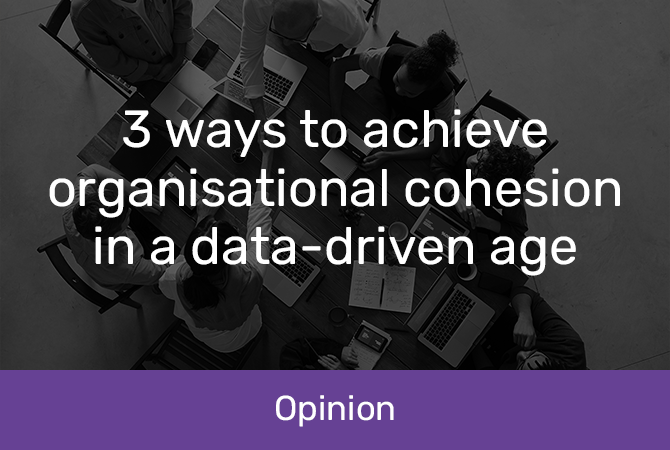
3 ways to achieve organisational cohesion in a data-driven age
Most organisations know the value of their data, and many are using it to improve the experience for their customers and business operations. Some run a slick operation with data underpinning key business decisions and reporting helping them to move faster, while others have burnt capital on large scale systems but are not seeing the value.
Why such polarity?
Often companies have a clear idea of the why, invest in the what, but don’t go deep enough into the how, and forget the who. When it comes to driving a data transformation initiative, people are your make or break. You could have all the best systems and processes in place, but if people are still doing what they have always done, it’s dead money.
Unless it’s a birthday trip to the Bahamas, no good can come from surprises. Data transformation initiatives need to be widely shared, championed and supported at every level of the business. Systems and process can (not will) support the buy-in of people, not detract from it.
![]() 1. Design for the future and the now
1. Design for the future and the now
Data transformation does not happen overnight, and there is no silver bullet – however, generating momentum is key in the early stages. Long-term projects that promise big rewards in two years simply don’t fit with the pace of today’s ‘I want it now’ generation, and with 49% of Millennials moving jobs within two years, they won’t be around to see its completion.
But, you can design for the future and start delivering value now. Sniff out the use cases that will generate the most value and prioritise them. Your roadmap should look more like a child’s ‘paint by numbers’, with more and more of the picture being filled in with each result. Don’t leave it all for the big reveal – instead take an agile approach to prove the value every step of the way.
![]() 2. Connect the dots across the organisation
2. Connect the dots across the organisation
Make it easy for the right hand to know what the left is doing. We’ve seen many large-scale initiatives fail because they were completed largely by isolated teams who, despite doing a great job on the technical aspects, failed to see their hard work generate results.
I can’t stress the importance of a project champion highly enough here. This person should be widely regarded in the business, be able to garner support and have a strong connection to the project manager (another pivotal role).
A project champion isn’t going to guarantee the success of the transformation, but when combined with strong data governance policies and structures, having someone beating the drum for your project can go a long way.
![]() 3. Put the people back into process
3. Put the people back into process
I know I said the word 'process', but don't tune out just yet! It's essential to build trust in the data by ensuring consistency (or where there are differences make sure they are known differences) across the organisation:
- Set clear definitions – clear data dictionaries and attribute definitions are key for technical and business users. It’s not enough for a report to say, ‘revenue growth of 2.5% and market share decline of 4%’. Is this same store revenue growth? Do the figures consider the three acquisitions we made this year? Was there a change in how we are reporting?
- Have a single source of the truth – where do people go to get the right information? Which tables and fields? If the marketing team reports customer growth, is this the same figure finance will use?
- Avoid the proliferation of reporting – have a funnel or gatekeeper for creating new reports, but try to steer away from cumbersome engagement protocols
If data transformation initiatives aren’t known about and championed, they’re essentially art. Expensive, uninspiring art. Getting the data right is important, but making sure it’s used correctly is equally important – so take a value-add approach to projects, garner internal support for the initiative (turn your sales efforts towards your internal team) and keep processes as people-centric as possible.
Making your data sing comes down to people. It’s not easy, but the gains can be huge.
 ABOUT THE AUTHOR: PIP SPYKSMA
ABOUT THE AUTHOR: PIP SPYKSMA
A long-time Dataminer, Pip joined in 2012 and is always on the hunt for a new challenge. As an Account Director, Pip combines analytical skills with her business nous to understand our clients’ biggest challenges and help them find a data-driven solution.















































